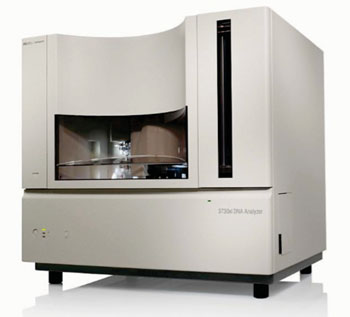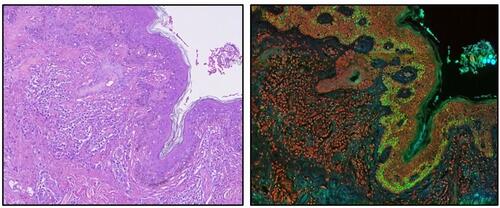Molecular Makeup Uncovered in New Form of Cancer
By LabMedica International staff writers
Posted on 25 Jun 2014
The molecular signature and genetic structure has been revealed of a new form of cancer that begins in the nose and is called biphenotypic sinonasal sarcoma (SNS). Posted on 25 Jun 2014
The cancer, that appears to be most common in women, starts in the nose and can spread to the rest of the face, meaning the patient will need disfiguring surgery in order to survive, but by uncovering the molecular makeup of the tumor it was found that many existing cancer drugs that could be used to treat it.

Image: The 3730xl DNA Analyzer (Photo courtesy of Applied Biosystems).
A team of scientists from the Mayo Clinic (Rochester, MN, USA) retrieved formalin-fixed, paraffin-embedded tumor blocks and histological sections of SNS biopsied or resected between 1956 and 2013 for 25 tumors, including a second sample that was also characterized at the cytogenetic level. A frozen tumor sample was obtained from a single specimen characterized at the cytogenetic level. Formalin-fixed, paraffin-embedded material from 145 nonrelated tumors and normal tissues was also retrieved.
Transcriptome sequencing was performed on extracted ribonucleic acid (RNA), and the concentration was measured using a Qubit 2.0 Fluorometer (Life Technologies, Carlsbad, CA, USA). Paired-end 50-base transcriptome sequencing was performed using a HiSeq 2000 sequencer (Illumina, San Diego, CA, USA). Real-time polymerase chain reaction were carried out on extracted RNA and sequenced with a 3730xl DNA Analyzer (Applied Biosystems, Foster City, CA, USA). Other techniques including immunoblotting and immunofluorescence, luciferase assays immunohistochemistry, and fluorescence based in situ hybridization (FISH), were also used.
The scientists discovered a recurrent chromosomal translocation in SNS, t(2;4)(q35;q31.1), resulting in a paired box 3- mastermind-like 3 (PAX3-MAML3) fusion protein that is a potent transcriptional activator of PAX3 response elements. FISH and RT-PCR studies confirmed rearrangement of the PAX3 locus in 24 of 25 SNS tumors (96%) and identified the PAX3-MAML3 fusion gene in 19 of these tumors (79%). Five of the remaining SNS tumors exhibited rearrangement of the PAX3 locus without MAML3 involvement, and a single tumor showed rearrangement of the MAML3 locus without PAX3 involvement. They did not detect the PAX3-MAML3 fusion in 118 other tumors, including rhabdomyosarcomas, melanomas, and benign and malignant nerve sheath tumors or in 18 normal tissues, including 13 normal sinonasal tissues.
André M Oliveira, MD, the senior author of the study said, “It's unusual that a condition or disease is recognized, subsequently studied in numerous patients, and then genetically characterized all at one place. Usually these things happen over a longer period of time and involve separate investigators and institutions. Because of Mayo's network of experts, patient referrals, electronic records, biorepositories and research scientists, it all happened here. And this is only the tip of the iceberg. Who knows what is in our repositories waiting to be discovered?” The study was published on May 25, 2014, in the journal Nature Genetics.
Related Links:
Mayo Clinic
Life Technologies
Applied Biosystems













